New Hampshire's
Align Phase
Plan-Do-Study-Act
PDSA rapid cycle development is an iterative problem-solving method for carrying out change.
Technical Assistance is underway to support the Community Implementation Teams utilizing PAP's PDSA prevention planning and implementation framework.
Our focus: address indicators of child maltreatment identified during the geospatial modeling process and employ high impact prevention efforts for rapid implementation and measurement.
Our First Steps:
Tools and a Framework for Selecting
High Impact Prevention Efforts
We begin with brainstorming, reflecting on the top indicators found, such as:
- Elevated serum lead levels in children
- Assault by bodily force
- Mortality due to acute drug intoxication
- Chronic opioid use in pregnant women
We consider what programs could improve these conditions or prevent them entirely while thinking about possible constraints during the brainstorming session, for example:
- Limited budget
- Limited labor
- Need to be implemented in the next quarter
Then drawing boxes from a central focus, we create branches of potential prevention ideas:
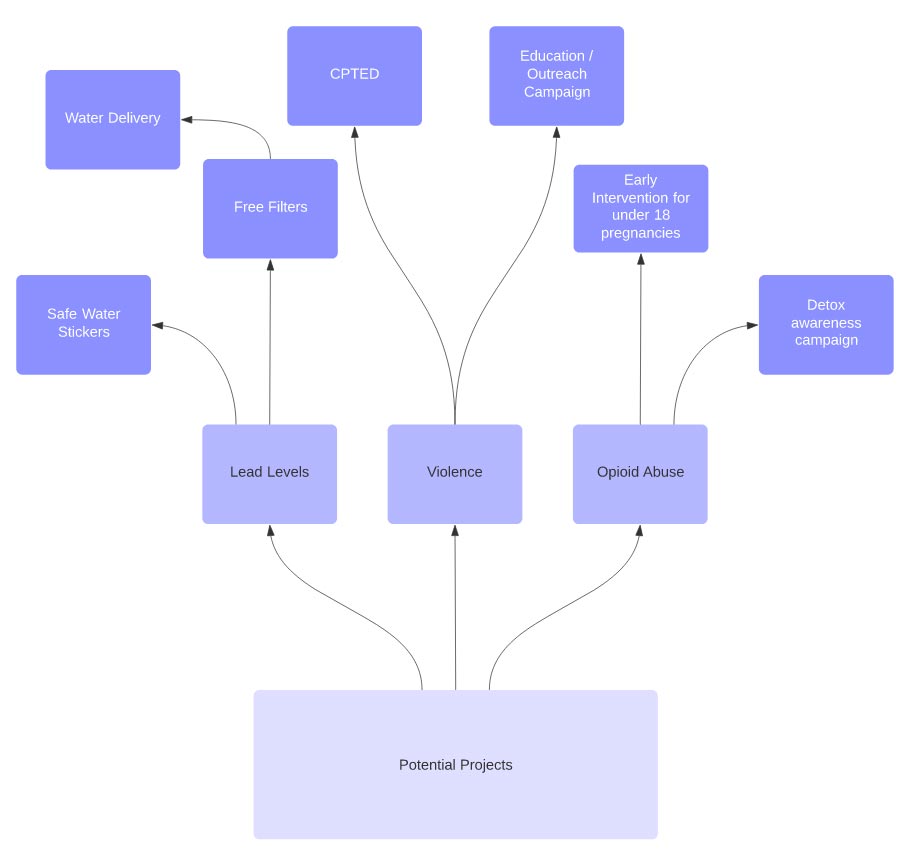
Next, we develop an Impact Effort Matrix with four possible categories to sort potential projects:
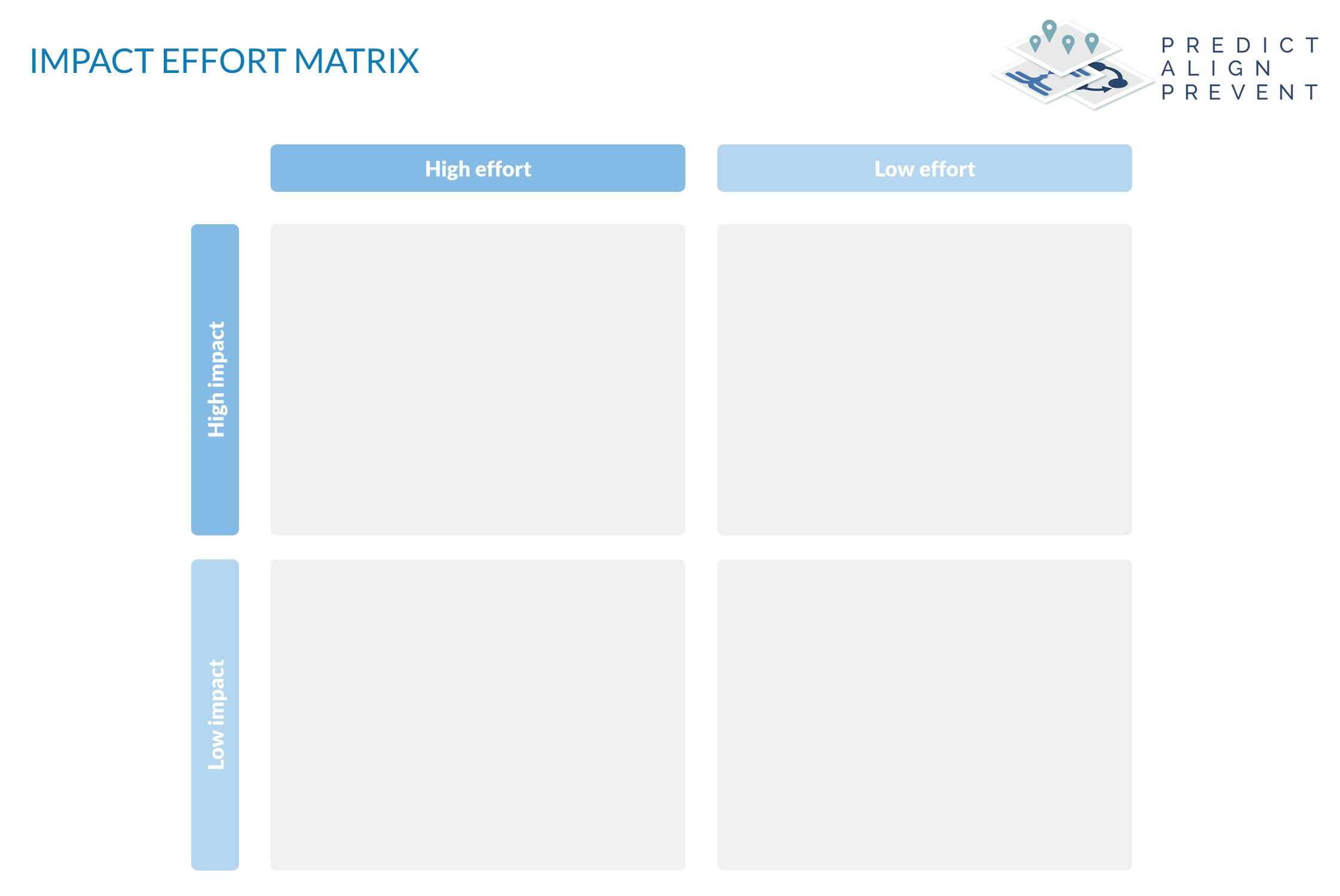
Our goal for rapid cycle development is to focus our PDSA cycles on high-impact low-effort projects to accomplish the greatest results in the least amount of time.
We then narrow potential projects using the Needs and Assessment Maps while determining how to best leverage available resources addressing the following:
- What are the current unmet needs in relation to high-needs areas?
- What are the top services your organization or group can provide which could fill these unmet needs?
- From the High-Impact, Low-Effort list, which potential projects are complementary to your organization's/group’s currently available resources and proximity?
- Given the potential needs, where do you see gaps in your resources?
- Task: Identify partners with resources to fill these gaps.
- List projects that can fill needs through your combined skills, resources, and external partnerships using a Venn Diagram to visually layout our choices.
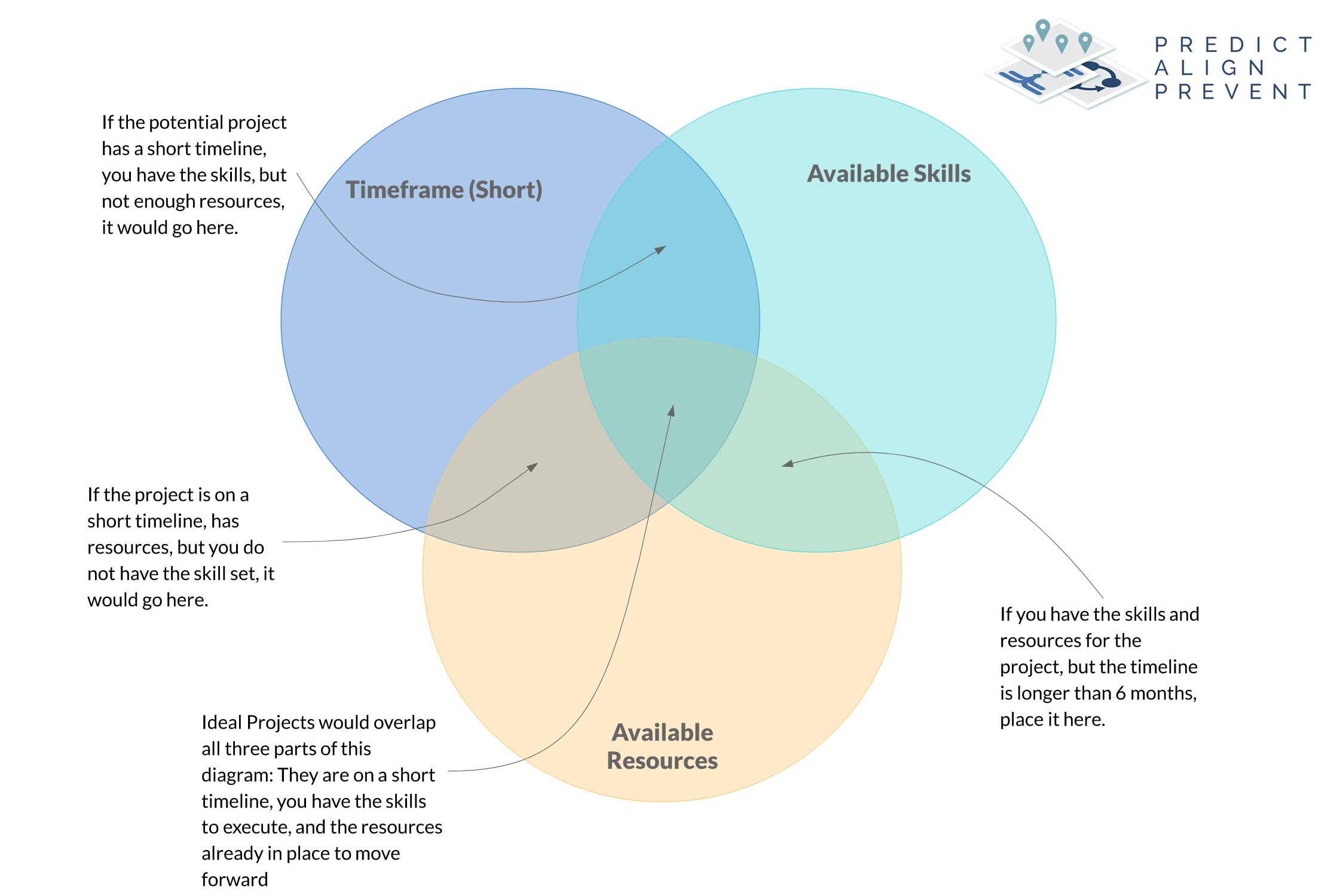
A decision matrix is our final step in selecting prevention projects for PDSA cycles:
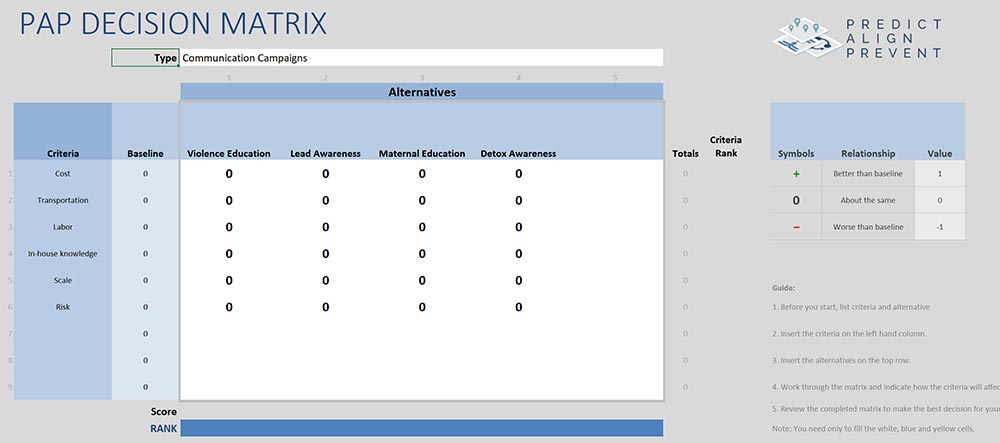
The Matrix ranks alternative options and criteria, helping to provide groups with an independent assessment of potential programs.
Next:
A Process for Defining Each PDSA Cycle
Establish the Who, How, and What of the Project
WHO
- Team Building: Establish a group leader who will recruit a team, develop and organize the project process, and lead the group through at least one PDSA cycle.
- Team Members: Select those who are the stakeholders with experience and knowledge about the project's focus. They should be able to make key decisions or have direct access to those who do. Larger teams are not necessarily better.
- Who does the team report to?
HOW
- Determine what reporting should look like and the schedule it should follow. How will bottlenecks or problems be reported and addressed?
- If changing an existing process, what is being done differently?
- List the desired project outcome(s).
- How can the process be improved?
WHAT
- What information needs to be gathered to test if the project is effective?
- Was the project carried out as planned per the process defined in the "HOW" step?
- What was achieved? Be specific.
- Is another PDSA cycle warranted? If so, should the team remain the same?
Hypothetical PSDA Example
Plan |
Goal: Educate K-6 children on the dangers of lead in drinking water and advise on best practices. |
Do |
Experienced trainers provide a 30-minute session about the dangers of lead and how to handle challenges with consumption and possible family bias. Trainers visit classrooms (in person or via streaming video) at least once to observe, provide support, and encourage implementation. Administer short quiz to students. Use polling tools if online. |
Study |
After 3 months, measure the number of children engaged with and scores of lead-awareness quizzes. After 6 months, visit the same classrooms again, re-administer the same quiz and compare results. |
Act |
Determine if the desired outcome was achieved - Goal: 1200 children visited over 3 months with 50% increase in quiz scores. |
Lastly:
An Alignment Guide for Leading Community Engagement
Identifying Stakeholders
An important step of the Align Phase is gathering organizations that work on the prevention of child maltreatment, or an outcome related to child maltreatment, to collaborate on amplifying shared prevention concepts, programs, etc.
To achieve multidisciplinary and cross-sector representation, we recommend community teams recruit at least one expert from each of the following relevant categories.
- Child Care
- Child maltreatment fatality
- Child maltreatment
- Disability services
- Domestic violence
- Elder abuse
- Foster care
- Homelessness
- Homicide/police department
- Illicit drug use
- Infant mortality/Premature Birth
- Injury-related fatality
- Juvenile justice
- Low 3rd-grade reading proficiency
- Maternal morbidity/mortality
- Mental health
- Poverty
- Prison recidivism
- Sex trafficking
- Suicide
- Teen pregnancy
- Violent crimes
Connect with Faith-Based Organizations
Identify places of worship in the highest Needs areas and send an introductory email. Follow-up with a personal invitation to the leadership of each location to attend a virtual convening at which details about the program and findings will be shared. The goal is to recruit faith organizations to participate in prevention efforts and share prevention messaging with their congregations.
An example of an introductory email
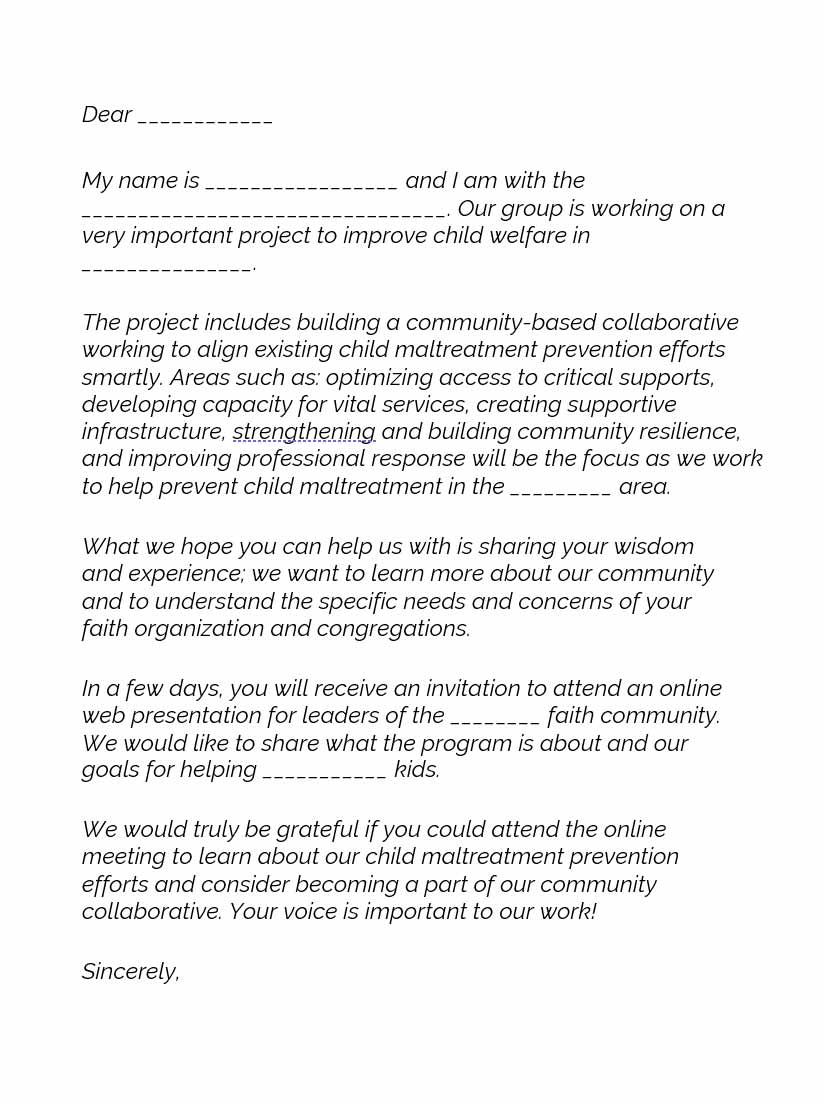
PAP Program Guide to Alignment Meetings Sample
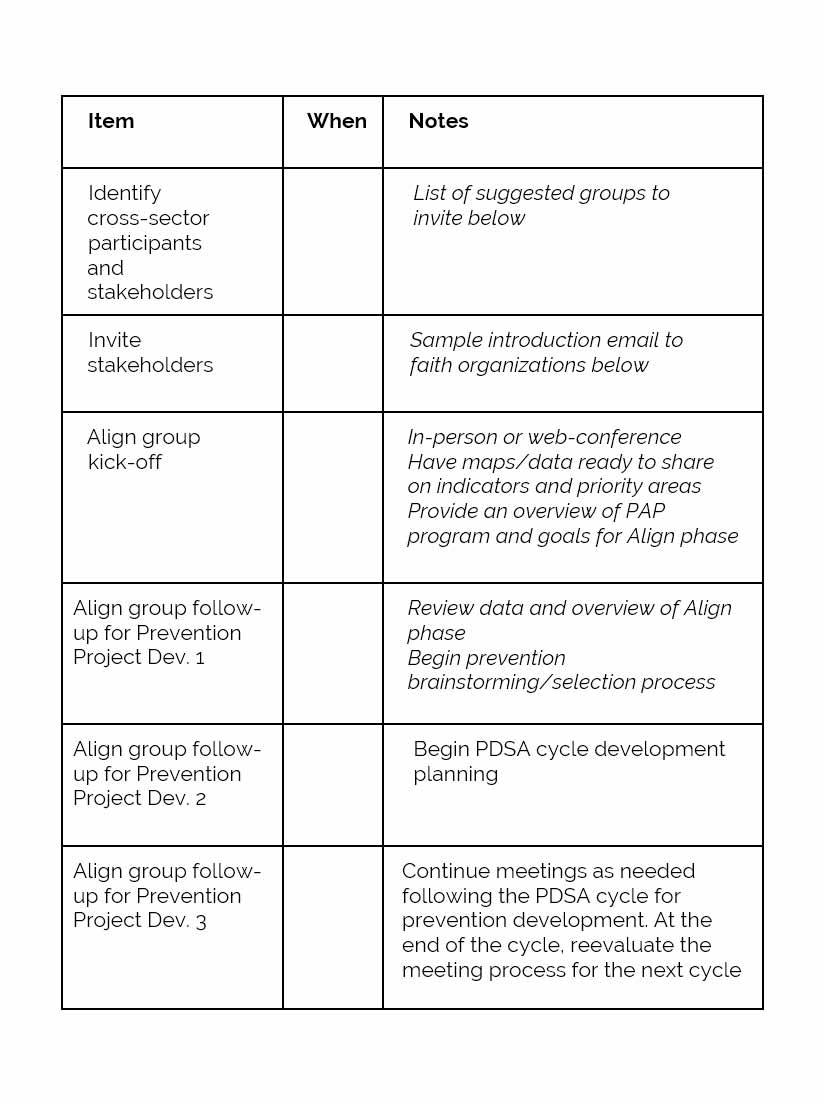
Considerations to discuss during Align Planning Meetings
- Media Advocacy: Start to develop relationships with local media and ask if they will help share the program with the community. You will most likely want to write letters to editors and create press releases, focusing on the issue and prevention messaging needed for change as the program unfolds.
- Local University Partnerships: Develop partnerships with your local university graduate programs to support program efforts. From creating prevention messaging materials to helping form community partnerships, graduate students are a fantastic resource and want to help their community. Graduate Capstone projects can be developed around program needs. This benefits the community and provides students with real-world experience.
- Survey Data on Community Needs/Voice: Collect relevant existing surveys that have been completed in your community which identify the perceived needs of residents. This will help teams to ensure the voice of the community is incorporated in prevention planning.
Sample Agenda for Kick-Off Meeting
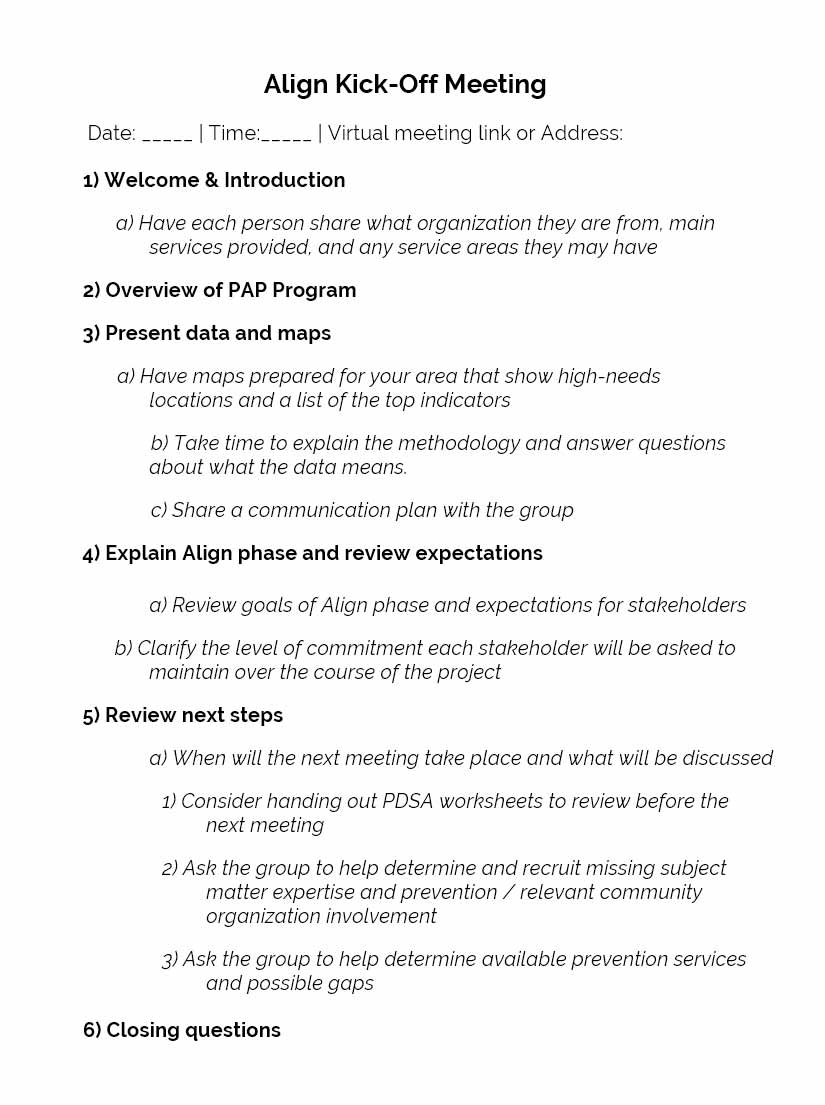
Sample Agenda for Follow-up Meeting 1
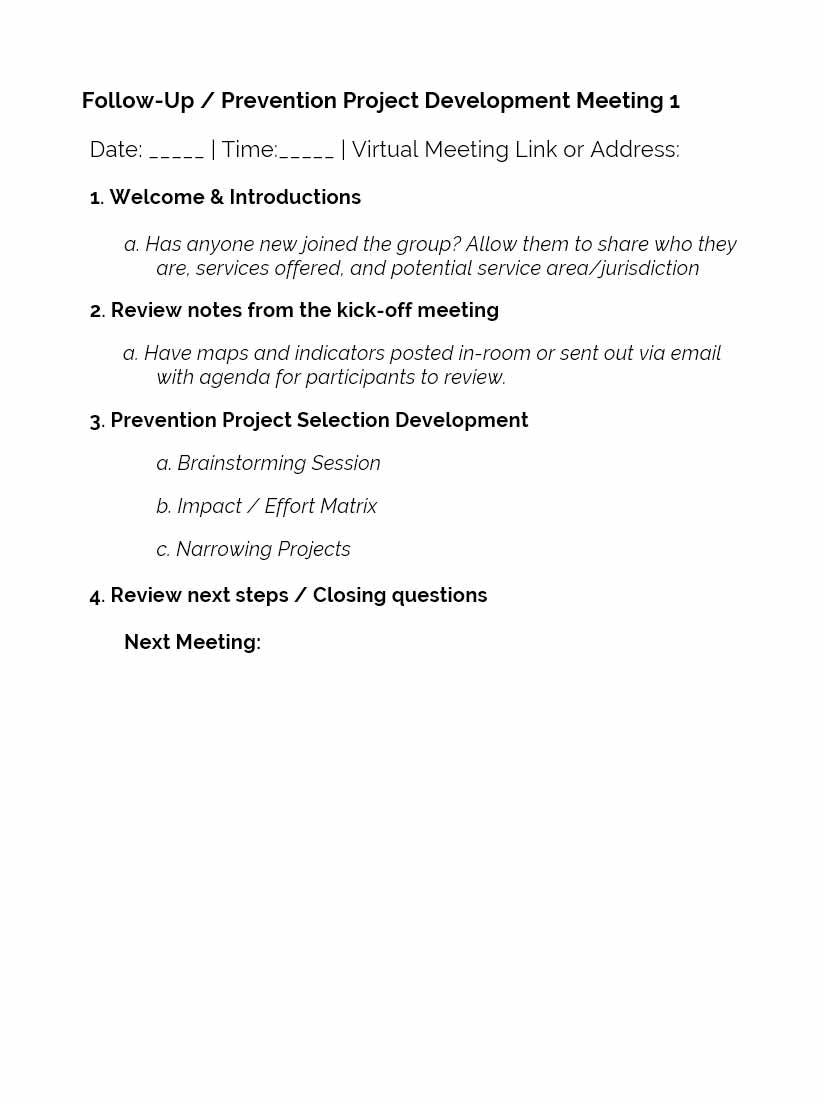
Sample Agenda for Follow-up Meeting 2
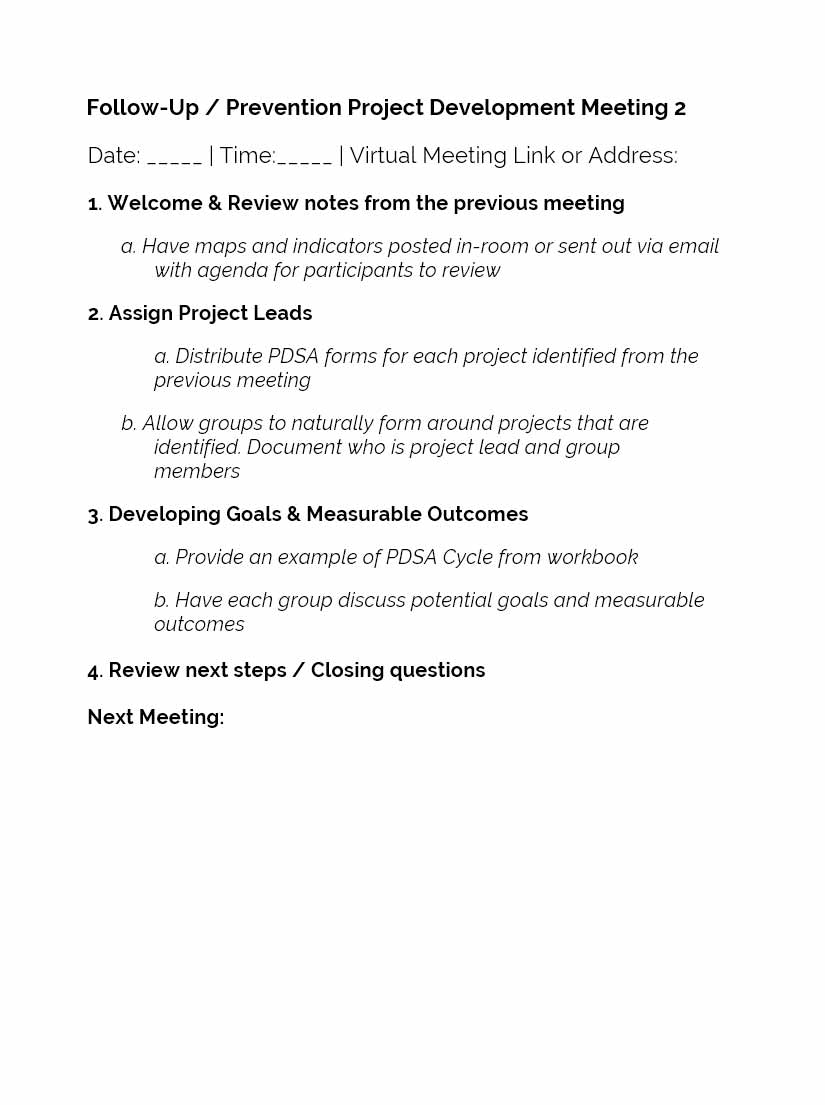
Planning Community Prevention Efforts
With our tools and framework in place, the DPHS Project Director for Community Collaborations, Data Analytics Team, and the PAP Technical Assistance Team have shared population health and safety Needs Maps with community teams and stakeholders to educate, discuss results, and answer questions.
A communication plan was developed for the Community Implementation Teams to share program details with existing and new partners.
Based on analysis results, community prevention efforts are now focused on the identified top risk factors of child maltreatment and teams are working to develop and implement prevention efforts using PDSA cycles.
The PAP analysis results are used to align, support, and further existing prevention work and establish and strengthen needs cases for new initiatives.
Needs Maps are currently being reviewed to support the following:
- Foster family recruitment, improved utilization of foster homes, and reduced distance between children in foster care and placement location
- Human trafficking risk group identification
- Health equity initiatives
- Bias prevention training
- School parenting class development
- Expanding mobile lab offerings and routes
- Increased lead screening and resources
- Education/community awareness regarding services around Lead
- Early Childhood Alliance initiatives
- Increased enrollment for the Woman, Infants, and Children program
- Open airways / asthma -- reduce school absences due to asthma
- Education health -- urinary tract infections / chronic conditions
- Improved water quality
- Family Resource Centers: increased enrollment and new location placement
... and the list continues to grow.
Precise identification of high needs areas within the communities provides diverse and impactful prevention opportunities.
Discovering Reach and Impact
Representing
Community Voice
in Prevention Planning
The collection and review of community survey data conducted in our program areas ensures the voice of the community is represented in prevention efforts.
Example: Southern New Hampshire Services (SNHS) provides services such as workforce and economic development, child development, education services, health and nutrition, community services, and energy assistance. This group conducted a community needs assessment in June 2020 of SNHS service recipients in Hillsborough and Rockingham counties.
Survey respondents were asked to select from a list of 17 needs which they or their family are facing and choose what they perceived as the most critical resources.
The “Family Needs” chart[1] below indicates all needs that were selected by at least 100 respondents.

The "Services Families Would Utilize if Available in the Community" chart[1] below provides an overview of the most commonly identified services respondents reported.
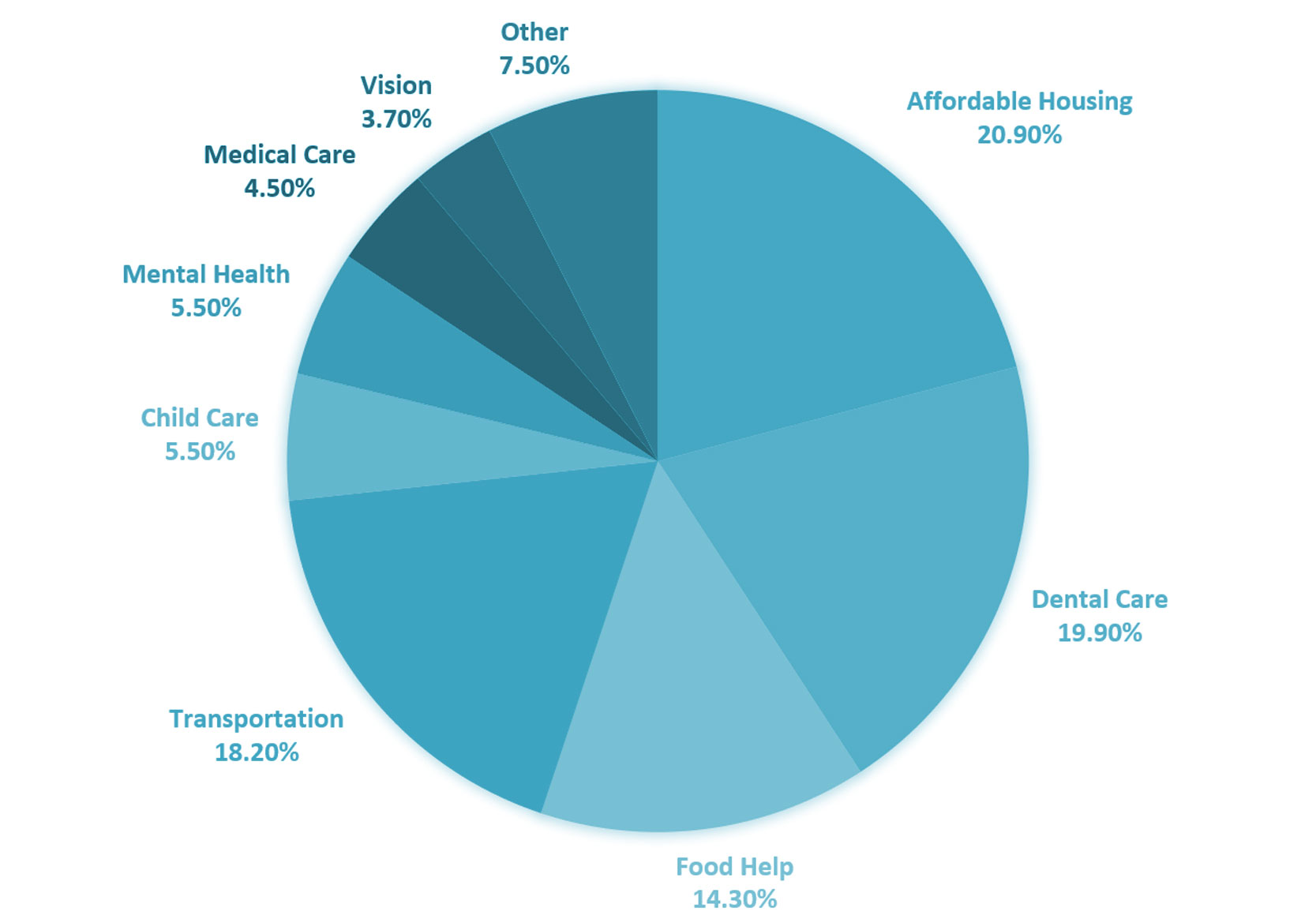
Survey data such as this provides insight and information for collaborations to consider and address when developing community prevention strategies.
Whenever possible, PAP recommends utilizing existing community surveys, assessments, and focus group data as just one of the many ways to remove redundancy and create efficiency in prevention planning efforts.
References
- [1]Southern New Hampshire Services (SNHS), COMMUNITY NEEDS ASSESSMENT JUNE 2020.
- Daley D., Bachmann M., Bachmann B.A., Pedigo C., Bui. M.T., & Coffman J. (2016). Risk terrain modeling predicts child maltreatment. Child Abuse Neglect. 62:29-38. doi:10.1016/j.chiabu.2016.09.014. https://www.sciencedirect.com/science/article/pii/S0145213416301922
- Predict Align Prevent (2019). Richmond, Virginia Technical Report. https://b9157c41-5fbe-4e28-8784-ea36ffdbce2f.filesusr.com/ugd/fbb580_2f1dda2ff6b84f32856bc95d802d6629.pdf